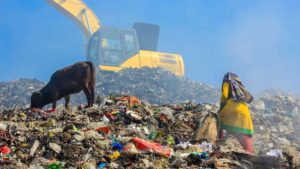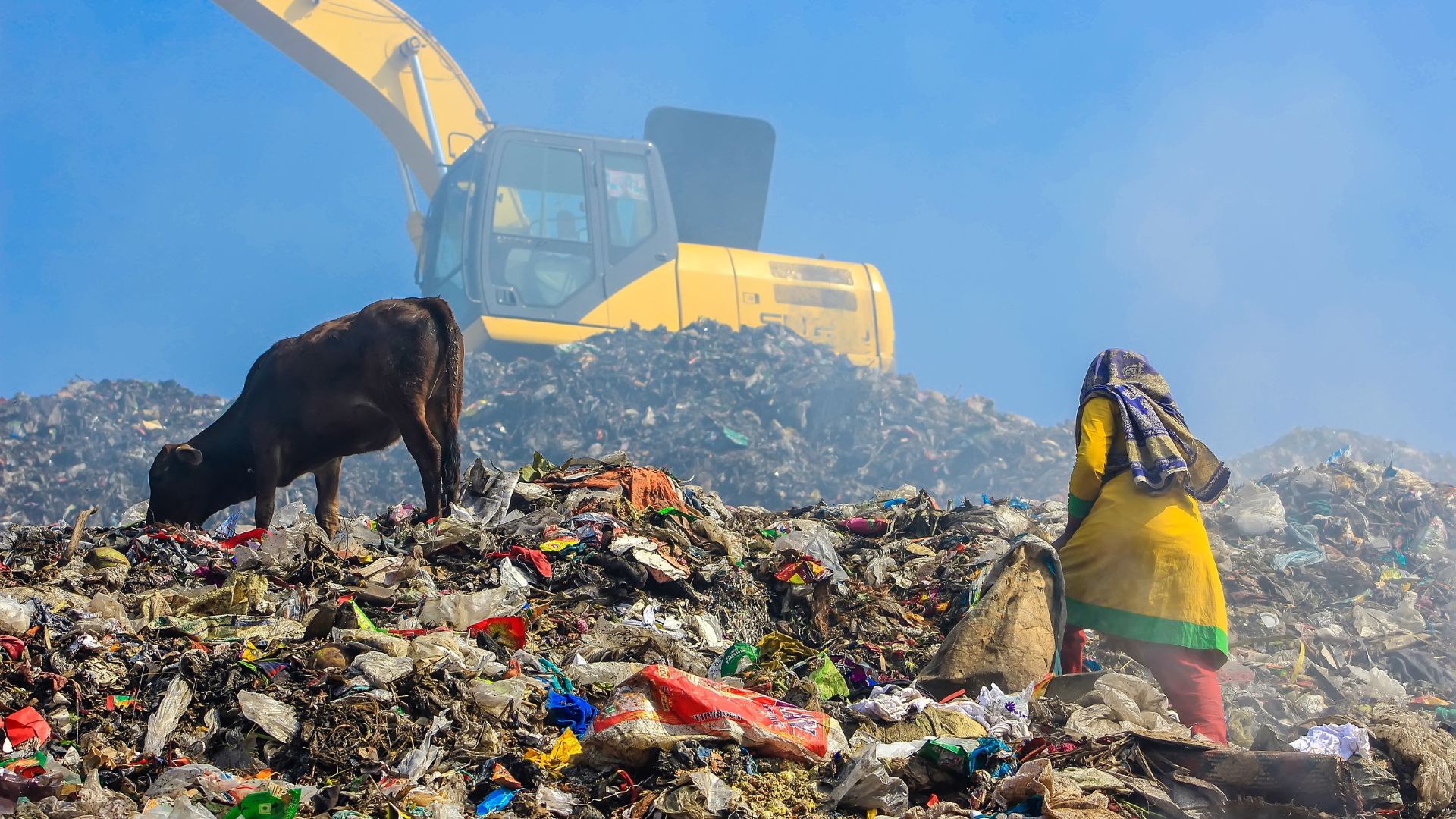Chythenyen Devika Kulasekaran
 The Print “Ground Report” titled “What is MCD roadmap to ‘completely flatten’ Delhi’s three landfills within a year?” by Sukriti Vats highlights the critical issue of Delhi’s massive landfills and the pollution they cause. It gives a good overview of the process used by the contractors engaged in the “bio-mining” of legacy waste in Delhi’s three landfill sites. Several “facts” and “figures” are presented in the report on the “high demand” for these trommel “segregated” legacy waste. However, projecting Waste-to-Energy as the silver bullet for the growing garbage problem is problematic in several ways. Furthermore, the report focuses on several “techno fixes” to the garbage problem rather than addressing it holistically from a geopolitical, social justice, and environmental standpoint.
The Print “Ground Report” titled “What is MCD roadmap to ‘completely flatten’ Delhi’s three landfills within a year?” by Sukriti Vats highlights the critical issue of Delhi’s massive landfills and the pollution they cause. It gives a good overview of the process used by the contractors engaged in the “bio-mining” of legacy waste in Delhi’s three landfill sites. Several “facts” and “figures” are presented in the report on the “high demand” for these trommel “segregated” legacy waste. However, projecting Waste-to-Energy as the silver bullet for the growing garbage problem is problematic in several ways. Furthermore, the report focuses on several “techno fixes” to the garbage problem rather than addressing it holistically from a geopolitical, social justice, and environmental standpoint.
For example, the contractor is given free rein without any counter questions while he explains the use of the three segregated fractions, which are inerts, combustible fractions, and construction and demolition waste. The inert waste is marketed as having a high nutrient value, which is simply not true. The Pollution Control Board, on the other hand, has declared it unfit for use as fertilizer. Similarly, the news report projects that the waste-to-energy plant will be “environmentally friendly” and “economical,” both of which are false claims. WtEs produce the most expensive form of electricity, despite the fact that the government subsidises more than 40% of the project. In 2020, the Central Pollution Control Board (CPCB) and the Delhi Pollution Control Committee (DPCC) conducted a joint inspection of WtE facilities and discovered some startling figures. Dioxin and furan emissions from all three facilities exceeded permissible limits, and their concentrations in the Okhla WtE were ten times higher! In 2021, IIT-M researchers led an international study that discovered chloride-rich particles were the primary cause of haze and fog formation, contributing to Delhi’s air pollution. And the primary cause of chlorine formation in Delhi’s air was the combustion of plastics to generate so-called renewable energy!
The news report appears to sidestep the question of “why a landfill in the first place?” in favor of focusing on tail pipe solutions. It makes no mention of more practical ideas like capping plastic production or banning the manufacture of non-recyclable plastics like MLPs. Why create something that is intended to pollute? The statement “Okhla model is India’s model” while advocating for more WtE plants is the final nail in the coffin. Nothing could be further from the truth, and such statements undermine the legitimate and inspiring fights by communities against projects such as the Okhla WtE. Despite the fact that the combustible fraction of garbage created each day is less than 1,100 tonnes, Delhi already burns approximately 8000 tonnes of the 11,328 tonnes of MSW generated per day. In fact, the “Okhla a.k.a. India model” was fined 5 lakh rupees by the DPCC and 25 lakh rupees by the NGT for causing severe health hazards and air pollution in Delhi. Ironically, the Solid Waste Monitoring Committee (SWMC) has recommended expanding the capacity to burn an additional 6,402 tonnes of waste using new WTEs. This raises the most important question – “Why and for whom should the new WtEs be built?”
Sensible solutions such as waste segregation at the source will result in materials that can be reused, recycled, and composted profitably. Furthermore, it has the potential to create 6-8 times the number of jobs as a typical WtE plant. The G20 summit in September 2023 should not exuberate the struggles of communities affected by WtE and other garbage, but rather serve as an impetus to embrace technologically feasible and socially just solutions. Overall, it would have been a better article if it had been more critical of popular waste management narratives and addressed the root causes of garbage generation.
Centre for Financial Accountability is now on Telegram. Click here to join our Telegram channel and stay tuned to the latest updates and insights on the economy and finance.

